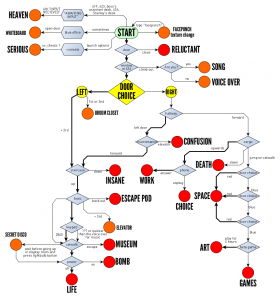> A) Why could you say that the “Indie” game scene is not a new thing and explain, give examples ?
The ‘Indie’ scene has been around since before I was born (over 20 years ago) but the scene has come back into the light with indie development teams making and producing games that challenge triple A companies. However, the indie scene actually started somewhere in the late 70’s/early 80’s with the Commodore 64 and ZX Spectrum. Creators would write their code for a game on either of the devices then that code could be shared or published into magazines such as ‘COMPUTE!’ where anyone could take that code, spend a tedious amount of time typing it in to their own device before being able to play the game that another game enthusiast like that had created. In a sense, this was the first wave of indie, with average people creating their own games for anyone to use and play without the control of gaming companies, leaving them free to make whatever they wanted.
The second wave of indie came in around the late 1990’s and early 2000’s with websites such as Newgrounds (1995), Kongregate (2006), Miniclip (2001) and Andkon Arcade (2006) which hosted thousands of free games created by people who just wanted to make something of their own and share it with the world. During the time of the second wave new Flash games were continuously being made and played and there was little to no way in which bigger gaming companies could compete with the mass of small time creators as all their content was free for anyone who wanted it. So it is fair to say that the indie scene is nothing new and in fact, we’re in roughly the third or fourth wave of indie.
> B) Has the term indie become meaningless ?
Where I believe that the term ‘indie’ has not become meaningless, I do think that its definition has somewhat changed over the years as well as the content under the term. By that I mean that indie is still something done on a somewhat small budget (comparative to AAA companies) but now indie games are not restricted to parts of the internet, Flash based games and have a much wider audience. Indie games can now compete with the big-name gaming companies and sometimes surpass them which is a stark contrast to how things were before.
For some indie games and their respective development teams, the category doesn’t quite fit as the quality of the content far outdoes what the common consensus is for what an indie game should be. An example would be Red Barrels Studios who are the people responsible for the Outlast games, two games and a DLC which look up to industry standard. With just 17 people on the team (as a of 2017), Red Barrels are creating content that is so well produced that it doesn’t feel like an indie game anymore. As well as that, the games were ported from PC to Xbox and PlayStation, again something that indie creators would never get before.

True though, these cases of what I can only describe as ‘AAA Indie’ are uncommon considering the ratio of AAA Indie to Indie is relatively small, it still does beg the question of how relevant the term indie is. In many cases, the term still is relevant but there is a rising need for a new term for these bigger games.
Anderson, N. (2012) First encounter: COMPUTE! magazine and its glorious, tedious type-in code. arstechnica [online] Available at: https://arstechnica.com/staff/2012/12/first-encounter-compute-magazine-and-its-glorious-tedious-type-in-code/ [Accessed 2 December 2017]
Co, A. (2017) Now Loading…Why Do Some People Not Consider Indie Games “Real” Games?. [online] Available at: http://www.playstationlifestyle.net/2017/05/24/now-loading-indie-games-vs-aaa-why-do-some-people-dont-like-indie-games/#/slide/1 [Accessed 2 December 2017]
CircleToonsHD (2017) Indie Games VS AAA Games
Available at https://www.youtube.com/watch?v=wGiKS4KD_38 [Accessed 2 December 2017]






